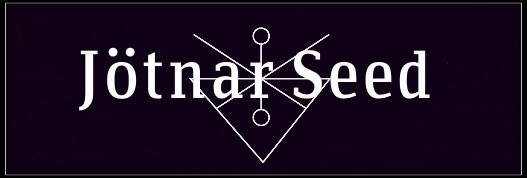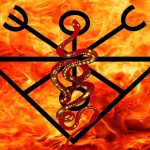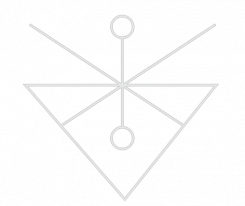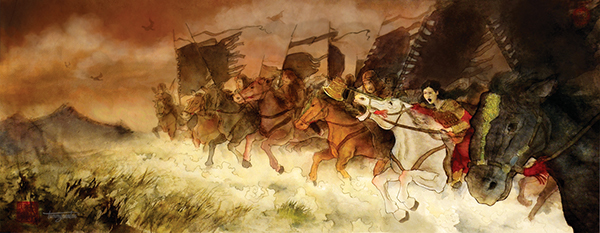Research activity is fundamental to us because it enhances the act of memory, restoring historical and archaeological concreteness.
The study of the fil rouge that binds our Scandinavian tradition to the Eastern tradition is the purpouse of this article, the first of a series that will take into consideration the links and similarities.
The journey begins in China, whose complex history is divided into dynastic cycles.
The first three dynasties were the Xia dynasty (2017 – 1600 sec. A.C.), the Shang dynasty (1675 – 1046 A.C.) and the Zhou dynasty (1122-222 A.C).
Of the first two, initially considered semi-mythical, we have an archaeological testimony thanks to the Zhou dynasty and the two dynasties that followed, the Qin dynasty (221 – 226 A.C) and the Han dynasty (206 A.C – 220 D.C).
Divination is one of the first fundamental connotations of the Chinese civilization, witnessed by the discovery of the oracular bones, epigraphic sources of great value as they come up to us in their original shapes, without successive manipulations.
They were discovered in a pharmacy in 1899 by philologist Wang Yirong who bought, on prescription of his doctor, fossil bones called “dragon bones”.
Noting the signs engraved on some of them, he immediately understood the value and submitted to paleo experts that confirmed his intuition: it was a form of writing that anticipated a millennium the one considered up to that moment as the oldest, the commemorative and ritual bronzes of the Zhou era.
The discovery allowed us to understand the fundamental steps of China’s graphic evolution, which can now be considered four:
- Proto characters of the oracular bones (Shang dinasty)
- Archaic writing of commemorative and ritual bronzes (Zhou dinasty)
- Writing style called “small seal” (Han dinasty)
- Modern Simplified writing style, in force in the People’s Republic of China (from 1950 to the present day)
The fortuitous finding of the articular bones also started the archaeological excavations that returned most precious findings, allowing us to rediscover uses and customs of the Shang era, a thriving and productive period considered up to that moment only mythological.
The divination system by oracular bones involved a carving process of a bone, usually bovine shoulder blades, turtle shells or carapecal, with grooves corresponding to possible answers. They were then exposed to the fire to produce cracks and patterns that allowed a response, based on the form and the relationship between cracks and grooves. Questions, answers and responses were also engraved on the bones used for the divination, habit that has allowed archaeological and historians to know even the names of the diseases for which the Oracle was consulted.
In the oracular bones found in the excavations carried out in Anyang, village of Xiaotun, there were found over 3000 proto characters present, including “Wu” character, meaning “shaman”, whose homophone of different spelling means “dance”: in the study of characters and theirs explicit and implicit meanings, the characters with the same pronunciation are used to explain one in the light of the other, as expected in Shiming(1).
Wu shamans, considered the first doctors of China, originally were women: a different character was assigned to shaman men, “XI”. These two characters are of great importance because they constitute one of the trial evidence of social equality present in China since the Neolithic period, before the introduction of the patriarchy during the Zhou dynasty progressively condemned and repressed the power of the Wu, of which we have testimony through descriptions from Great evocative power:
“Wu women danced spiral dances, spoke the language of the spirits and around them the objects rise in the air and clashed, they could become invisible, teared with knives and swords, spit fire, were taken away on a cloud that shone How full of lightning. ” (2)
In this writing, originally present on an oracular bone, two hands make an offer that is received from above. Two figures dance around a central pole where the hands of a shaman is represented with the traditional ritual dress, with long sleeves. The last two characters on the right represent the wu / mo characters “shaman”
When the divination through the oracular bones fell into disuse, the divinatory art still remained prerogative of Wu, as well as the knowledge of herbs and their therapeutic virtues, the control of atmospheric phenomena and treatment of diseases through physical movement techniques and vocalization (3).
In 1976, the finding of the Queen Fu Hao’s grave, wife of Emperor Wu Ding, was tryly shocking. She was a Queen, a military chief and a shaman in an age in which the feudal patriarchy was already erasing with tenacity all female contribution from official historiography: no one could assume that the Queens could enjoy such a prestige in the Bronze Age, as instead testified by the finding of the oracular bones, in which her name is mentioned more than 150 times.(4)


Notes:
(1) Etymological dictionary, II century d.C
(2) De Groot, The Religious System of China
(3) It is mentioned in the Shan Hai Jing, the “Classic of the mountains and the seas”, a fundamental text attributed to the emperor Yu, mythological founder of the Xia dynasty.
(4) D. Eliseff, “La donna nella cina imperiale”, 1991, pp. 29-33
– Giulia Boschi, “Medicina Cinese: la radice e i fiori”, Casa Editrice Ambrosian
- Photo credit to the artists
____
*Shares without reference to the source are subject to complaint, since the elements of copyright established by italian law are infringed*

Vanatrú Italia
Il gruppo dei traduttori composto da Federico Pizzileo, Irene Parmeggiani, Valentina Moracci, Elio Antenucci, Federico Montemarano, Silvia Giannotti e Sonia Francesconi si occupa della traduzione in più lingue degli articoli e del sito web.

